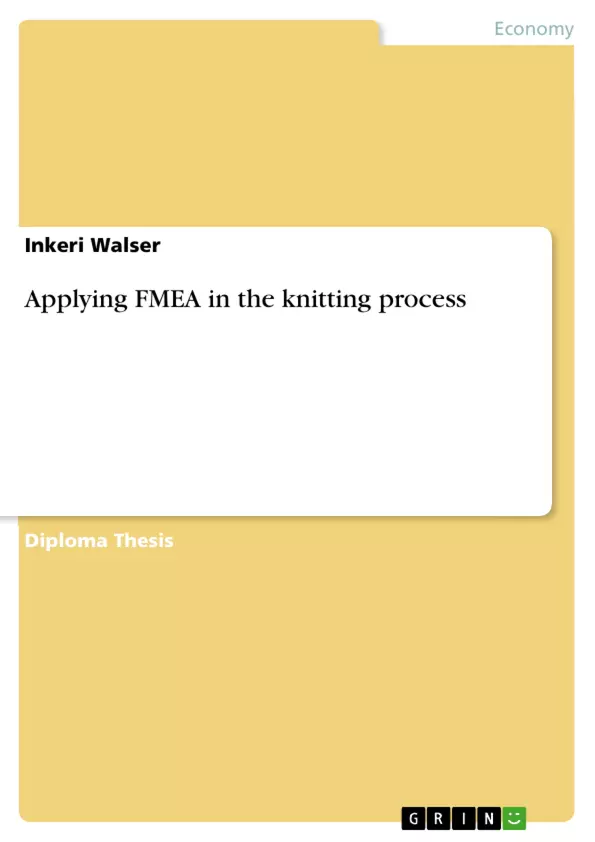Die Diplomarbeit "Applying FMEA in the knitting process" entstand in Zusammenarbeit mit der Firma Textivision in Mexiko. Das Ziel der Arbeit war, ein Qualitaetssystem (FMEA) fuer die Strickproduktion zu entwickeln und anzuwenden.
Inhaltsverzeichnis (Table of Contents)
- What is FMEA?
- History
- Purpose of FMEA
- FMEA-Team
- Core Team
- Support Team
- Fundamental ideas of Teamwork
- Team Members
- Team responsibilities
- FMEA-Process
- Why Process-FMEA?
- 13 Steps to conduct Process-FMEA
- Create a detailed component list (Bill of Materials)
- Identify the complete production process
- Identify the failure modes
- Describe the effects of each defect
- Develop a Severity Ranking for each defect
- Identify the causes of each defect
- Develop an Occurrence Ranking for each defect
- Identify the current control in the production line
- Develop a Detection Ranking for each defect
- Calculate the Risk Priority Number (RPN) for each defect
- List the RPN from the highest ranking to the lowest
- Set actions to correct, reduce or remove all defects
- Recalculate RPN and continue taking actions
- FMEA form
Zielsetzung und Themenschwerpunkte (Objectives and Key Themes)
This document aims to explain the Failure Mode and Effects Analysis (FMEA) method and its application within a knitting process. It details the steps involved in conducting a Process FMEA, emphasizing the importance of teamwork and the use of risk priority numbers (RPNs) to prioritize corrective actions.
- Understanding FMEA methodology
- Implementing FMEA in a knitting production environment
- Teamwork and collaboration in FMEA
- Risk assessment and prioritization using RPNs
- Corrective actions and continuous improvement
Zusammenfassung der Kapitel (Chapter Summaries)
The "What is FMEA?" section defines FMEA and its purpose in preventing defects. The "History" section traces the development and adoption of FMEA across various industries. The "Purpose of FMEA" section outlines its objectives and broader benefits. The "FMEA Team" section discusses team composition, roles, and responsibilities. Finally, the "FMEA-Process" section describes the thirteen steps involved in conducting a Process FMEA, including detailed examples for each step. This section concludes with a sample FMEA form. Note that the conclusion chapter is excluded from this preview.
Schlüsselwörter (Keywords)
The core keywords and focus topics of this document are Failure Mode and Effects Analysis (FMEA), Process FMEA, risk priority number (RPN), quality control, defect prevention, continuous improvement, knitting process, teamwork, and systematic analysis.
- Quote paper
- Dipl.Ing. Inkeri Walser (Author), 2006, Applying FMEA in the knitting process, Munich, GRIN Verlag, https://www.grin.com/document/186338



